Related Research Articles

Whirlow is a suburb of the City of Sheffield in England, it lies 3.7 miles (6 km) south-west of the city centre. The suburb falls within the Dore and Totley ward of the City. It is one of the most affluent areas of Sheffield, with much high class housing and several notable small country houses within it. During the Victorian era it was home to some of Sheffield's most influential citizens. Whirlow straddles the A625, the main Sheffield to Hathersage road. The suburb covers the area from Parkhead in the north to Whirlow Bridge in the south and from Ecclesall Woods in the east to Broad Elms Lane in the west. Whirlow had a population of 1,663 in 2011.
The Star, often known as the Sheffield Star, is a daily newspaper published in Sheffield, England, from Monday to Saturday each week. Originally a broadsheet, the newspaper became a tabloid in 1993. The Star, the weekly Sheffield Telegraph and the Green 'Un are published by Sheffield Newspapers Ltd, based at The Balance in Pinfold Street in Sheffield City Centre.
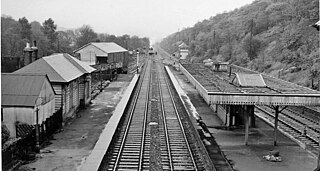
Beauchief railway station was in Sheffield, South Yorkshire, England.

Millhouses and Ecclesall railway station was a railway station in the Millhouses district of Sheffield, South Yorkshire, England.
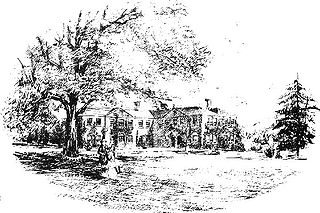
Thornbridge Hall is a large English country house situated near the village of Great Longstone in the local government district of Derbyshire Dales in Derbyshire. It is a Grade II listed building.

Watson Fothergill was a British architect who designed over 100 unique buildings in Nottingham in the East Midlands of England, his influences were mainly from the Gothic Revival and Old English vernacular architecture styles.
Henry George Hoyland was a Sheffield-born portrait and figure painter. After studying in Sheffield, London and Paris, he returned to Sheffield to teach at the Sheffield School of Art from 1921 to 1929, as well exhibiting as an artist. In 1930 he moved to London with his family to continue his career as a painter.

Parkhead Hall, formerly Parkhead House and The Woodlands, is an English country house situated in the City of Sheffield in South Yorkshire. The hall is a grade II listed building and is located in the suburb of Whirlow close to the junction of Ecclesall Road South and Abbey Lane. The hall is difficult to view for the general public, being surrounded by high walls and housing, although a glimpse of its northern side can be seen from Ecclesall Road South.
William Herbert Higginbottom JP was an architect based in Nottingham.
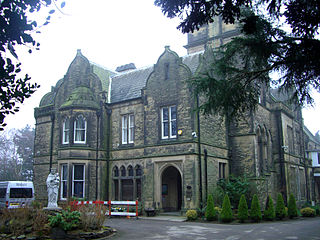
Mylnhurst is a small English country house on Button Hill in the Ecclesall area of Sheffield, England. The house was previously a private residence, it now serves as a private school. The house along with the attached stables and lodge are Grade II listed buildings.

John Holloway Sanders FRIBA was an architect based in England and chief architect of the Midland Railway until 1884.

William James Morley FRIBA was an English architect who practised from offices in Bolton, Greater Manchester and Bradford, West Yorkshire.

St Mary and St Laurence's Church, Bolsover is a Grade II* listed parish church in the Church of England in Bolsover, Derbyshire.
Felicia Dorothea Kate Dover was an English woman who was tried for murder and convicted of manslaughter in 1882 following the death of Thomas Skinner from arsenic poisoning. She was trained as an artist at Sheffield School of Art and was skilled in drawing flowers. She was popularly known as the Queen of Heeley due to her artistic interests and her standard of dress.
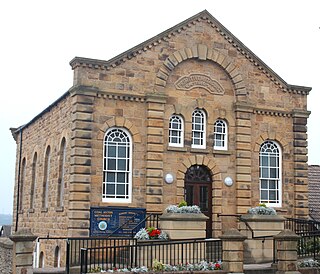
James Kerridge was a British architect based in Wisbech, Cambridgeshire.
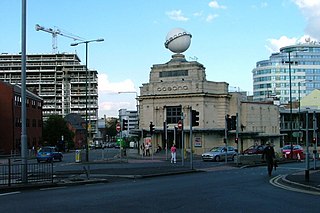
Henry Hardwick Dawson FRIBA was an architect based in Nottingham.

John Dodsley Webster (1840–1913) was an English architect who designed more than 15 churches in Sheffield in various Gothic styles, usually working to a tight budget. His work also included hospitals and commercial buildings, small country houses and private houses. All his known work was carried out in the South Yorkshire and North Derbyshire area except for a chapel and school built in Coventry.

Harry Beswick FRIBA was County Architect for Chester from 1895 until 1926.
Francis Houlton Wrench LRIBA AMICE was an architect based in Sheffield.

John Brightmore Mitchell-Withers FRIBA (1838-1894) was an architect based in Sheffield.
References
- ↑ Brodie, Antonia (20 December 2001). Directory of British Architects 1834-1914: Vol 2 (L-Z). Royal Institute of British Architects. p. 193. ISBN 082645514X.
- ↑ "Memorial to Mr. Mitchell-Withers" . Sheffield Daily Telegraph. England. 6 September 1922. Retrieved 25 June 2023– via British Newspaper Archive.
- ↑ Historic England, "Trustee Savings Bank (1247585)", National Heritage List for England, retrieved 25 June 2023
- ↑ Historic England, "Sheffield City Council Education Committee Offices (1246562)", National Heritage List for England, retrieved 25 June 2023
- ↑ "Opening of the Carlton Restaurant, Sheffield" . Sheffield Daily Telegraph. England. 10 July 1900. Retrieved 25 June 2023– via British Newspaper Archive.
- ↑ Harman, Ruth; Minnis, John (2004). Pevsner Architectural Guides Sheffield. Yale University Press. p. 121. ISBN 9780300105858.
- ↑ "The Advance of Hillsborough" . Sheffield Daily Telegraph. England. 12 March 1911. Retrieved 25 June 2023– via British Newspaper Archive.
- ↑ "Phoenix Theatre, Langsett Road, Sheffield, S6 2LL". Cinema Treasures. Retrieved 25 June 2023.